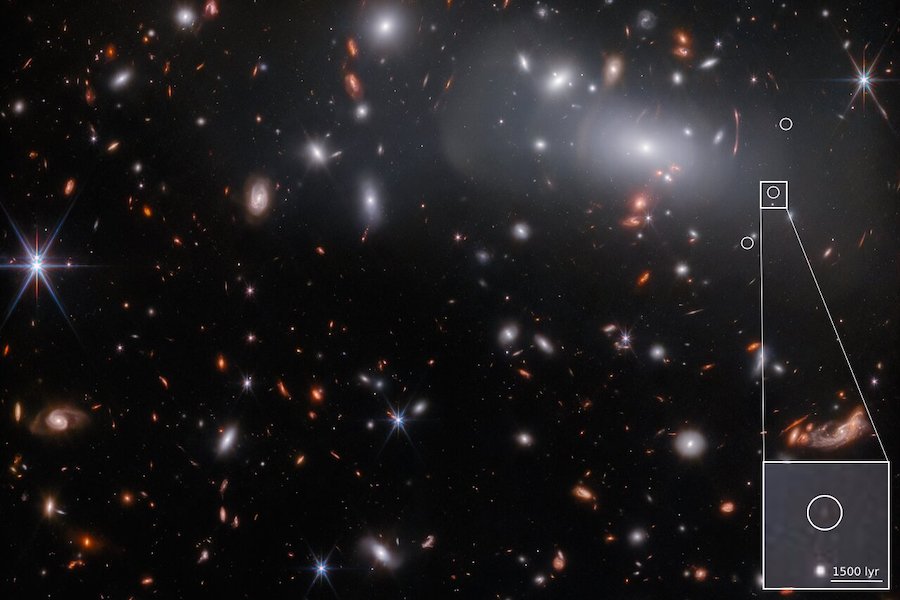The (Brief) Diary of a Supernova

Recently the James Webb Space Telescope captured, in a single image, three separate moments during the death of a star nine billion years ago. The star and its galaxy (a hook-shaped blob) lie behind a galaxy cluster that has warped space into a lens. As the explosion unfolded, its light found three paths of different lengths through the warp, creating this time-lapse. Supernova explosions are among the rarest and most cataclysmic events in the universe. This one begins as a bright dot just above the arc of the galaxy. Almost a year later, Earth time, the supernova is no longer easily visible. Shock waves, gas and radiation spread out across the galaxy. Behind the cover of distance, time and darkness, the galactic chaos has barely begun. After roughly 1,000 days, the supernova has faded from view. Astronomers have tentatively identified it as a Type 1A, which can be used as a “standard candle” to calibrate the size of the universe and how fast it is expanding. This triple feature was discovered last year by Patrick Kelly of the University of Minnesota, using first the Hubble Space Telescope and then the James Webb Space Telescope. Records like these help astronomers refine their calculations to find out where we came from, where we are going and how soon we might get there — if we ever do.